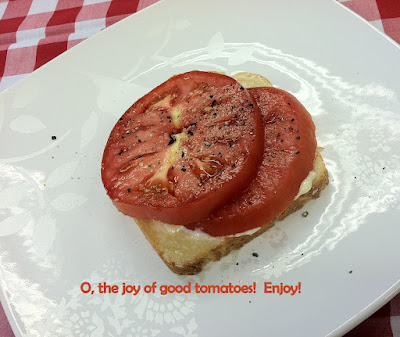Summer is almost over and I have not posted anything on eggplants. Well, you know I just can't let that happen. After all, eggplants will soon be out of season and I don't feel that you should wait a whole year to eat eggplant.
Eggplant is one of my favorite vegetables. Until recently, the globe eggplant was the primary one available in the United States. Now we have a wider variety, such as, Japanese, Thai and Rosa Bianca. For more unusual varieties, check out your local
farmers market.
While eggplant Parmesan is an excellent dish, there are numerous ways to use eggplants. The nice thing about eggplants is that they don't have a lot of flavor, therefore, they are able to blend in with other ingredients, such as tomatoes and zucchini. They can be saut
éed and used on pizza, in lasagna, and in sandwiches. Eggplant is a component of the Greek dish,
briam and the French dish,
ratatouille.
For this recipe, I went to the blog,
Olive and Tomato. I don't generally recommend many blogs, but this is one I like. The blogger is Elena Paravantes, a registered dietitian, born in the US, but now residing in Athens, Greece. Ms. Paravantes blogs on the Greek-Mediterranean diet. This recipe is adapted from one that I found on her blog.
Tomato Topped Eggplants
Serves 4 to 6.
Ingredients:
2 to 3 eggplants
Extra virgin olive oil
1 small onion, chopped
1 garlic clove, minced
2 cups chopped tomatoes, preferably heirloom
½ cup chopped roasted red pepper
Salt and pepper, to taste
1 teaspoon sugar, optional
4 to 6 ounces Feta cheese, crumbled
Directions:
1. Slice eggplants crosswise, into
½-inch thick slices (do not peel). Place eggplants in a colander, salt and allow to sit for about 1 hour. This will help to reduce the bitterness and collapse plant cells, allowing the eggplant to absorb less oil.
2. Heat about 1 tablespoon of olive oil in a saute pan over medium heat. Add onion and cook until translucent, about 3 to 5 minutes. Add garlic and cook for about 1 minute. Add tomatoes, red pepper, salt, pepper, and sugar. Cook until most of the moisture has evaporated. Set aside.
3. Rinse the eggplant slices and squeeze out the water. Brush eggplant with olive oil. At the point, the eggplants can be sauteed or grilled. Set aside.
4. Place eggplants on a baking sheet. Top with tomato mixture and feta cheese. Drizzle with additional olive oil.
5. Bake in a 350
°F oven until heated through, about 15 to 20 minutes.
Note: The tomatoes and eggplants can be cooked in advance and assembled and baked later.
If you want more ways to use eggplants, check out this information from
Cooking Light.























